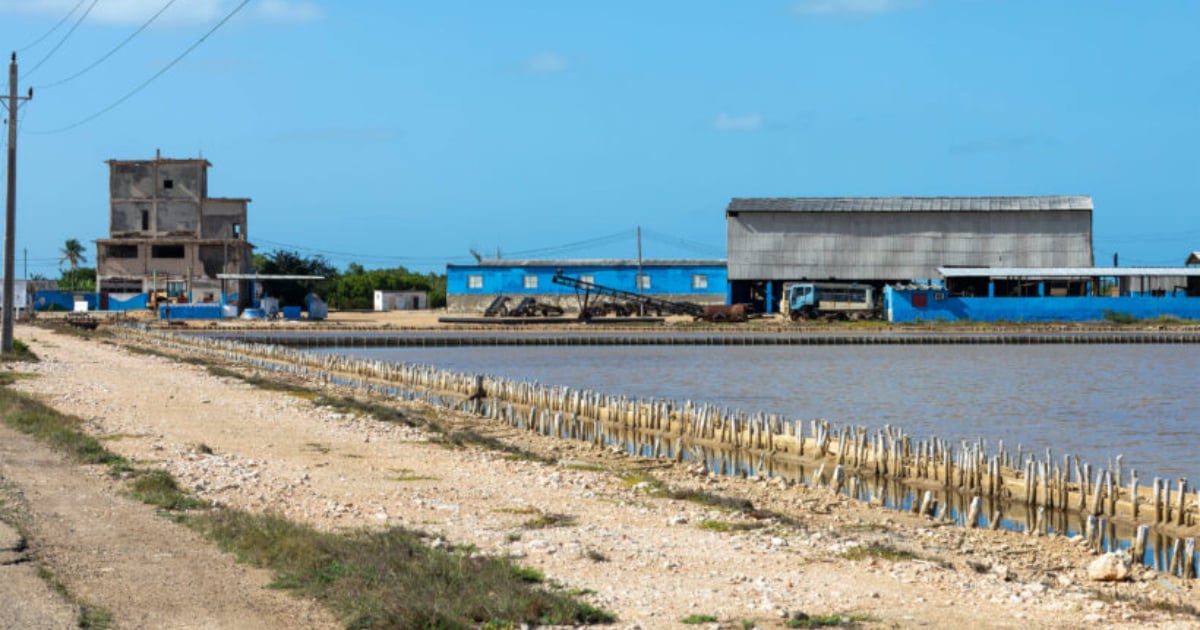The salt production industry in Matanzas is facing a dire situation. The Basic Business Unit (UEB) of Salinera Matanzas, located in the municipality of Martí, has been unable to maintain a stable production cycle for over a year, according to an official report from the pro-government newspaper Girón. The pumps responsible for drawing seawater are out of operation, machinery is severely corroded by salt, and the plant's infrastructure is deteriorating due to the lack of essential materials.
Blas Jesús Hernández Santos, the company director, acknowledged that the saltworks barely produces between 1,000 and 4,000 tons annually, which is only a fraction of its output in previous decades. In 2024, the company suffered a six million peso loss after heavy rains ruined several tons of collected salt.
The brine has become contaminated due to prolonged inactivity and lack of water circulation. Frequent power outages hinder the pumping and maintenance of evaporation and crystallization ponds, halting the natural process of salt extraction. "The pumping system is over 15 years old, and we're trying to salvage it on our own," stated Hernández Santos.
Without basic operational resources—such as paint to protect structures or gases to mold or weld deteriorating parts—production relies heavily on manual labor. For the past two years, workers have resorted to loading salt into wheelbarrows, as the harvester has been out of service for an extended period. Key parts of the plant have been relocated to other provinces to address emergencies in higher-priority state centers.
Extreme Working Conditions for a Dedicated Workforce
The workforce perseveres under extreme conditions. Only 14 young individuals remain on the current staff, which used to be composed of over a hundred people, many with more than 20 years of service. Alternative production lines, like calcium sulfate for white cement or industrial talc, are operating on a minimal scale.
Nationwide Salt Shortage: A Widespread Crisis
The crisis in Matanzas is not an isolated incident. In Artemisa, over 450,000 residents have gone months without receiving salt as part of their basic ration, while in Havana, the June and July quotas were only distributed in August.
In June, authorities from the Geominero Salinero Business Group (Geominsal) admitted that although “tens of thousands of tons were ready for distribution,” the lack of transportation prevented the salt from reaching the population.
In response to this situation, the government has decided to increase investments in other regions of the country, such as the Guantánamo salt flats, deemed more “efficient” due to their climate. Some surplus resources from that operation might be directed to Matanzas, although no concrete assurances have been made.
Meanwhile, Cubans continue to face a prolonged shortage of this essential product. The lack of salt has driven many to purchase it on the informal market at prices as high as 500 pesos per pound, further straining the economic burden on families.
Impact of Salt Shortage in Cuba
What are the main causes of the salt production crisis in Matanzas?
The crisis is primarily due to outdated and corroded equipment, lack of essential materials, and frequent power outages, all of which disrupt the natural production cycle.
How is the salt shortage affecting Cuban citizens?
The shortage forces many Cubans to buy salt on the informal market at exorbitant prices, exacerbating the economic strain on families.
What steps is the government taking to address the salt crisis?
The government is focusing on increasing investments in more efficient salt production areas like Guantánamo, with hopes of reallocating some resources to Matanzas.
